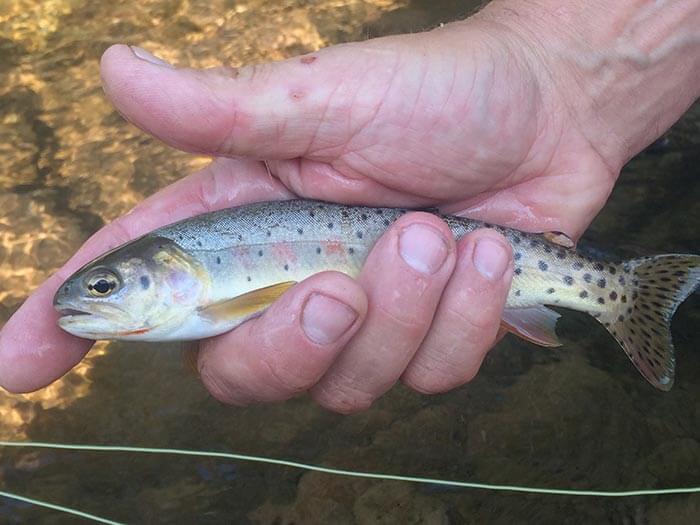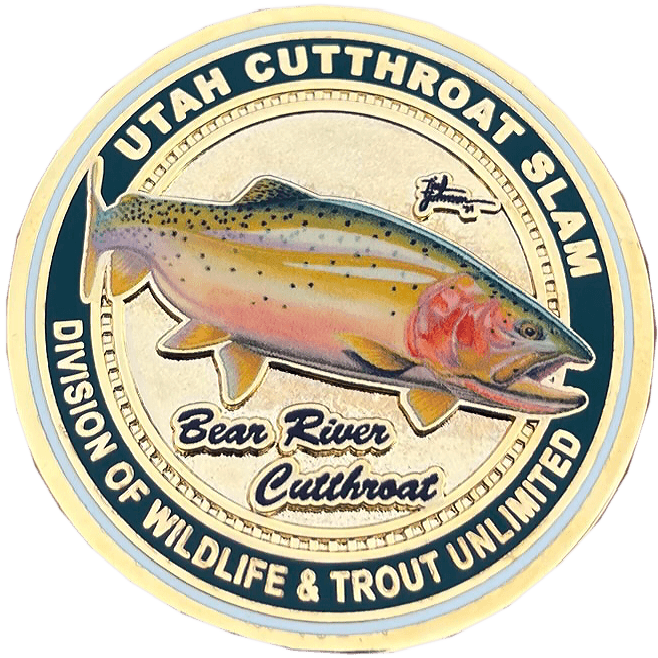
08 Aug Orvis Slam Story, Day One: Into Bear Country
Original post found HERE on Orvis News. Written by Phil Monahan
Back in April, we posted about the new Utah Cutthroat Slam program, which requires anglers to catch the four subspecies of cutthroats native to the state. Having had a blast completing the Wyoming Cutt Slam with my two brothers a decade ago, I knew that I wanted to try the Utah version. I called my friend Brett Prettyman—Intermountain Communications Director for Trout Unlimited—who is based in Salt Lake City, and he put together a great itinerary for me to get the job done in a week. I talked my high-school buddy Fred Hays (brother of Sandy, whose pictures have graced this blog many times) into joining me on the adventure, and we landed in Salt Lake last Sunday morning.
We immediately got on the road, heading for our first stop, Bear River Lodge, which sits along the river in the North Uinta Mountains. We were met there by Jim DeRito, TU’s Bear River Project Leader, who took us to see a fish screen installed at the head gate of an irrigation canal to keep trout from being carried into the canal system from which they can’t escape. The water flows across a long screen, which keeps the fish on top and deposits them back into the river. The water for irrigation falls through the screen and empties into the canal. It’s a great system for preserving the needs of both the water users and the cutthroats.

Then it was time to try to catch the first of our four species, the Bear River cutthroat. This took all of five casts, and I actually missed the first two fish that struck my PMX dry fly. (I blame travel weariness for my slow reaction time.) The river looks much like my native-brook-trout streams in Vermont, and the fish were about the same size, ranging between three and six inches. The Bear River species features sparse, small spots on its sides, but the spots get larger and more numerous as you move toward the tail. It’s a beautiful fish.

Fred landed his first cutt just a few minutes later, and we proceeded to leapfrog each other through the pocket-water sections of the freestone stream. We each caught several trout, including some brookies, as Jim checked an in-stream temperature gauge that he had affixed to a midstream boulder. After pulling the gauge, he inserted it via a USB connection to a data-storage device he had carried in with him. It was cool to be there to witness the nuts and bolts of stream-data collection and remember that it’s dedicated people who do the grunt work that helps us understand our fisheries better.

Photos by Phil Monahan
By the time Fred and I had caught a half dozen fish each, the day was starting to wane, and so were we, having risen at 3 a.m. EDT to catch our flight out of Albany, New York. We hiked back to the truck and were treated to a glorious view of the mountains bathed in slanted, golden sunlight. It was a great start to a journey that would have us running all over the Beehive State for the next five days.
Come back for Part Two tomorrow!
Click here for more information about the Utah Cutthroat Slam.





Sorry, the comment form is closed at this time.